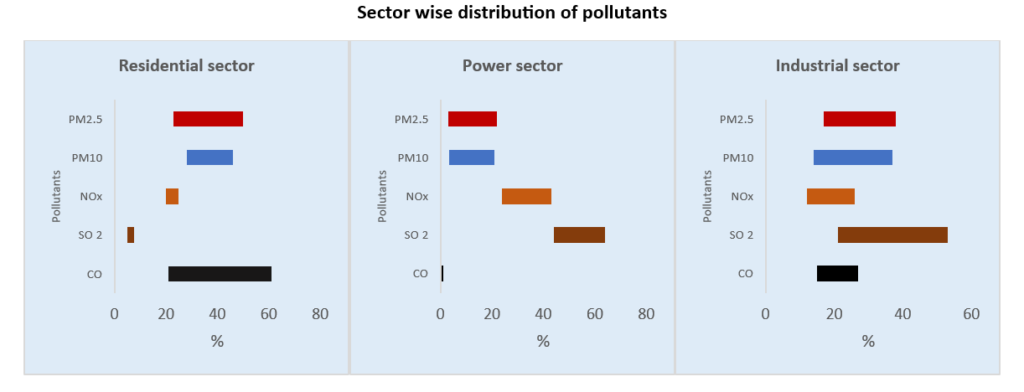People across cities in India and the World are increasingly suffering from poor air quality. Indian Cities like NOIDA and Delhi had AQI as high as 436 this year. As per UNEP, an AQI of 50 or below is considered safe, while readings above 100 are deemed unhealthy.
The International Day of Clean Air for Blue Skies is commemorated annually on 7th September in recognition of the fact that clean air is important for the health and day-to-day lives of people, while air pollution is the single greatest environmental risk to human health and one of the main avoidable causes of death and disease global.
| Did you know? The Air Quality Index (AQI) is used for reporting daily air quality. It tells you how clean or polluted your air is, and what associated health effects might be a concern for you. EPA calculates the AQI for five major air pollutants regulated by the Clean Air Act: ground-level ozone, particle pollution (also known as particulate matter), carbon monoxide, sulfur dioxide, and nitrogen dioxide. The greater the density of pollutants in the air, the higher the Air Quality Index (AQI), a scale that runs from 0 to 500. An AQI of 50 or below is considered safe, while readings above 100 are deemed unhealthy. According to UNEP partner IQ Air, only 38 of 117 countries and regions averaged healthy AQI readings in 2021. |

India has one of the highest burdens of emissions of particulate matter (PM), sulfur dioxide (SO2), and carbon monoxide (CO) in the world; second only to China. Air quality across the globe continues to deteriorate due to increasing emissions, threatening human health and contributing to climate change, biodiversity loss, and pollution and waste. Some may blame it on the stubble burning that happens in the states of Punjab and Haryana. Whatever the reason, the citizens suffer from the alarmingly poor quality of air leading to major chronic respiratory disorders. Many residents don’t remember seeing a clear blue sky since urban centers are filled with smoke released from cars and other vehicles along with fog.
According to the World Health Organization, 99% of the global population breathes unclean air, and air pollution causes 7 million premature deaths a year. PM2.5, which refers to particulate matter with a diameter equal to or less than 2.5 micrometers, poses the greatest health threat and is often used as a metric in legal air quality standards. When inhaled, PM2.5 is absorbed deep into the bloodstream and linked to illnesses such as stroke, heart disease, lung disease, and cancer.
In order to take measures, let us first understand what are the major sectors that are contributing to air pollution. From the graph below, we can see the residential sector leads in PM2.5 emissions, with contributions ranging from 27 to 50 %. The power sector is the leading emitter of SO2 (Sulfur dioxide) emissions, with contributions ranging from 44 to 62%. Since a significant amount of coal is consumed in power generation. The power sector is also the leading emitter of NOx (Nitric Oxide)emissions, with its contribution ranging from 24 to 43 percent. While the contribution of households to primary PM 2.5 emissions is highest, coal-based power plants and industrial units also contribute a large share of PM2.5 through secondary particulate matter, which is a result of the transformation of SOx and NOx emissions from gas form to particle form.

Source: CEEW
Going Forward
While as individuals, we can and should reduce the usage of petrol/diesel-based vehicles and opt for EVs or public transport or reduce the usage of fossil fuel based electricity, significant impact is only possible when governments enforce policies for Industries and the general public. Creating policies and passing laws to restrict air pollution has been an important step toward improving air quality.

Here are some of the laws implemented to clean up the air:
In 1970, fueled by persistent visible smog in many U.S. cities and industrial areas and an increase in health problems caused by air pollution, the Clean Air Act paved the way for numerous efforts to improve air quality in the United States.
The United Kingdom first passed its Clean Air Act in 1956 following a deadly smog event that killed many London residents.
In China, where rapid industrial and urban growth in recent decades resulted in a sharp decrease in air quality, numerous laws about air pollution have been passed, including a frequently updated five-year national plan to meet target reductions in air pollution.
In 2013, The Indian Government introduced the National Electric Mobility Mission Plan (NEMMP) to scale up the adoption of zero-emission vehicles, and the accelerated introduction of Bharat Stage (BS) VI fuel in the country. More recently, India’s Ministry of Environment, Forest and Climate Change (MoEFCC) launched the National Clean Air Programme (NCAP) to ensure that India meets its National Ambient Air Quality Standards (NAAQS) within a stipulated time frame.
It is important to note that while laws and regulations have proven impactful, with the rising population and urbanization, the AQI levels are bound to increase. We need technological improvements in affordable purification technology, electrification of transportation systems and better urban infrastructure to reduce the dependence on conventional fuels for millions of citizens to breathe safe air.


